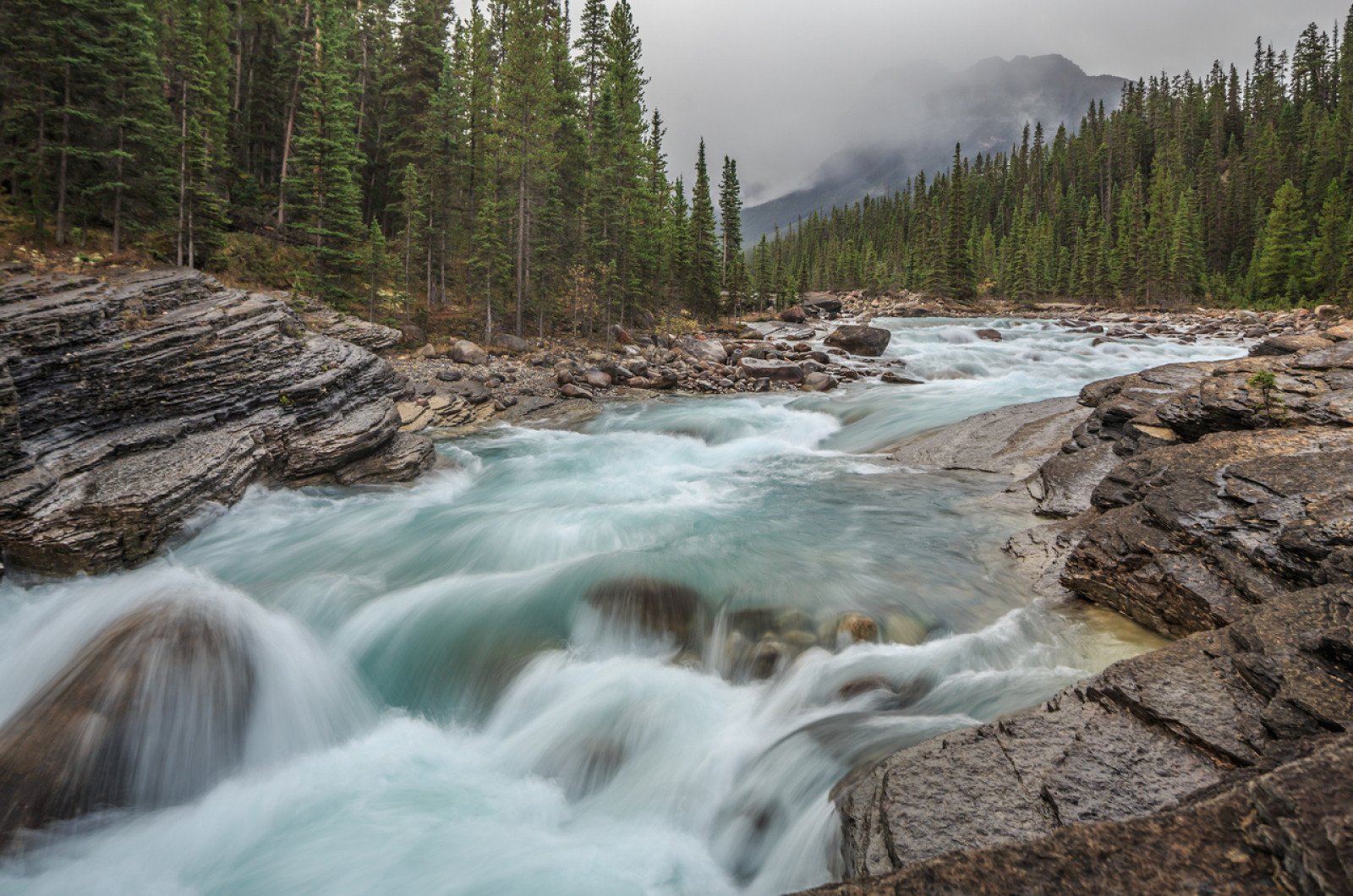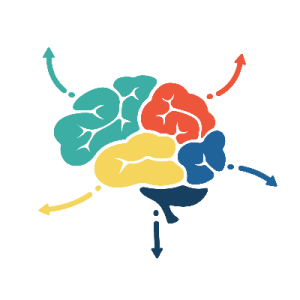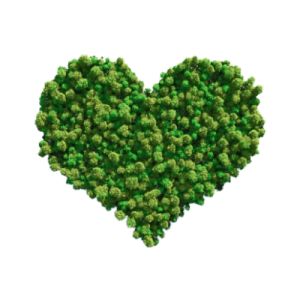Honouring and describing the movement of water
Which best describes the natural flow of water: a line or a circle?

Overview
Students use Indigenous perspectives on water and their understanding of linear relations and circles to decide whether the movement of water is more linear or circular.
Instructions
What you'll need
- "Honouring and describing the movement of water" slides
- "Honouring and describing the movement of water" worksheet, one per student
- "Indigenous perspectives on water" handout, one per pair of students
- Digital projector and display
- Begin the activity by organizing your students into pairs. Encourage your students to suggest words that can be used to accurately describe the natural movement of water. Invite them to share their ideas with the class.
- Watch these short videos, “Water is alive with its own spirit” and "Honouring water with the Leq'a:mel First Nation". After watching the videos, provide each group with a copy of the "Indigenous perspectives on water" handout. Invite your students to suggest words that can be used to accurately describe the natural movements of water, encouraging them to use ideas from the videos.
- Open up and display the "Honouring and describing the movement of water" slides. Show slide 2, and brainstorm and discuss the various ways that water can move. Have students revisit and refine their initial suggestions by using the descriptive words from this slide. Show slide 3 for examples of the descriptions.
- Show slide 4 and provide each student with a copy of the "Honouring and describing the movement of water" worksheet. Ask students to note their initial ideas to the question “Which best describes the natural movement of water: a line or a circle?” As an alternative to having students discuss their decisions, ask them to share what ideas helped them make the decision.
- As students share their thinking, show slide 5 and discuss how the criteria can be used to help guide their decisions.
- Show slide 6 and review the mathematical properties of a linear pattern.
- Display slides 7 and 8, and ask students to use properties to the graph to decide how well the graph describes the flow of water on land.
- Show slide 9 and review the mathematical properties of a circle.
- Display slide 10 and ask students to suggest which linear and circular movements are represented in the images.
- Show slide 11 and ask students to describe the measure of the size of the whirlpool, a circular movement. To complete the missing values on the table, students which will first need to find the value of p.
- Display slide 12 and encourage students to apply the property of a circle to determine how well it describes water’s movements below the surface. Remind your students to pay attention to both of the linear and circular movement.
- Guide students’ attention back to their worksheets and their initial decision. Show slide 13, inviting them to revisit their initial position: is their decision now the same or different? Encourage them to use the criteria from slide 14, and to extend their thinking using their new learnings about Indigenous perspectives of water and how mathematical thinking can be used to describe water’s natural movement.
Modify or extend this activity
Extensions
- Formally introduce the concept of slope to students as they learn about the properties of linear patterns.
- Introduce Fibonacci’s theorem and how it uses Pythagorean’s theorem as a means to describing water’s spiralling movements more accurately.
- Invite students to modify the graph on the speed/velocity of water by having students consider the additional factors (see the Teaching Notes).
Modifications
- In step 2, consider assigning groups one of the sources from the handout.
- Provide students with the value of the constant p in the formulae for circumference and area and have them check the accuracy of the tables’ values before solving for the missing values.
- Provide students with an image of a whirlpool and draw a circle around the outer rim of the whirlpool to help students understand the meaning of the blue circle and its connection to circumference and area of a circle (slides 10-12).
Curriculum Fit
Grade 7 Math
Big idea
- Linear relations can be represented in many connected ways to identify regularities (patterns) and make generalizations
- The constant ratio (size of circle depends on diameter) between circumference and diameter or radius of circles can be used to describe, measure, and compare spatial relationships
Content
- Discrete linear relations, using expressions, table and graphs
- Circumference and areas of circles
Curricular competencies
Reasoning and analyzing
- Use tools or technology to explore and create patterns and relationships, and test conjectures.
Communicating and representing
- Explain and justify mathematical ideas and decisions
Assessments
Assess how well students:
- Understand water’s natural rhythmic (pattern-oriented) movements.
- Mathematically describe water’s natural rhythmic (pattern-oriented) movements using the properties of linear patterns or of a circle.
- Decide whether water’s natural movement is more linear, more circular, or other functional form including a combination of the two, or a curve.
Teaching Notes
- Encourage students to create a table of values of the x-y coordinate points on the graph to make additional mathematical connections between the properties of linear patterns and the graph on slide 10. For example, student will see that if x increases by 1 unit, y will increase 1 for the first set of points, then 3 for the second set of points and then 2 for the third set of points. Note that these sets capture the speed of water’s movement in the upper, middle, and lower segments of a river system.
- You may wish to share the following information of what factors affect the energy and speed of water’s movement in a river system:
- The power (strength) of moving water becomes greater the more water there is, the faster it is moving and the less friction there is.
- The speed of the water increases as more water is added to rivers via tributary rivers. This means that less of the water is in contact with the bed of the river and the mouth so there is less energy used to overcome friction. Water flows progressively faster on their journey downstream.
- Width, depth and therefore volume increases as more water is added from tributaries.
- Gradient (the slope of the land) decreases as rivers flow because the river meanders across the land rather than erode into it and follow a straight path as it does in the source. This means it covers a decrease in height over a longer distance the further downstream you get.
- More detailed information on this topic can be found on the following website: Streams and drainage systems
How this activity was developed
These materials were created with guidance from Indigenous educators, subject matter experts and thought leaders to help draw upon important teachings, learnings, and Indigenous perspectives.
For centuries, the traditional western view of water has often been focused on its value as a resource. Indigenous people have a unique relationship with the waters of British Columbia. Since time immemorial, water has played a sacred role and is seen as a living entity. How water is used must be carefully considered with a view towards not just the immediate need and impact, but the needs and perspectives of generations to follow.
We are dedicated to deep listening and respectfully highlighting Indigenous ways of knowing in the materials we provide B.C. educators. If you have any feedback for us on these activities, or suggestions for others, please email schools@bchydro.com. We would love to hear from you.
About the artist
The design of the worksheets in this activity was a collaborative effort with Indigenous artist Kelli Clifton. Kelli Clifton was born and raised in Prince Rupert, British Columbia and is Gitga’at from the community of Hartley Bay. Clifton is interested in using her artwork as a form of storytelling—especially in relation to her Ts’msyen language (Sm’algyax), her coastal upbringing and her experiences as an Indigenous woman. Clifton currently lives in her home community where she continues to practice her art and teaches Sm’algyax at a local high school. Learn more about Clifton's art on her Facebook page.
BC Hydro’s commitment to reconciliation
BC Hydro exists to serve British Columbians by providing clean, reliable and affordable electricity. We recognize that maintaining and developing the system has impacts on the lives and interests of Indigenous Peoples. To support our move towards true and lasting reconciliation, BC Hydro will acknowledge past wrongs, listen to Indigenous perspectives and seek shared understanding with First Nations communities and governments.
Learn more about our Statement of Indigenous Principles.








